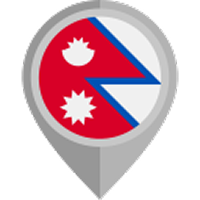Nepal vision | 27/05/2024
The Manaslu Circuit trek is one of the unexplored paths between the majestic peaks of the Manaslu region. It provides an exhilarating experience as you walk through the Budhi Gandaki River, which has scenic views of the Manaslu, Ganesh, and other mountains.
Timing is crucial for the Manaslu Circuit trek. To fully immerse yourself in the heavenly experience of the region's hidden gems and Tibetan culture, it's essential to choose the right time for your trek. A well-timed visit will ensure you make the most of your adventure.
Let's clarify all the seasons so that you can determine the best time to visit Manaslu Circuit Trek.
Overview of the Season in Manaslu Region
There are four seasons in the Manaslu region. Summer, Winter, Autumn, Spring. Every season has its challenges and highlights.
.
But when it comes to trekking the off-beaten path of Manaslu, you need the season with the best weather conditions, along with good trails and excellent visibility of the peaks. Before you decide on the best time, let us know about all the seasons in the Manaslu region in brief.

Spring Season
Spring is one of the best times for trekking in the Manaslu region. The weather is generally stable, with clear skies, and it is a time to observe panoramic mountain views of Manaslu, Annapurna, Ganesh, and many more.
Daytime temperatures at lower elevations range from 15°C to 25°C. At higher elevations, temperatures can range from -6°C to 5°C.
The trails are in good condition, with lush greenery at lower levels and desert-like landscapes at higher altitudes. Higher passes like Larkya La and Manaslu Base Camp may still have some snow, but it is manageable.
As spring progresses, temperatures can rise, especially at lower elevations. This can make the initial stages of the trek uncomfortably warm and potentially exhausting.

Autumn (September to November)
Autumn is another peak trekking season with stable and clear weather conditions. Post-monsoon, the air is crisp and clean, providing some of the best mountain views. In this season, the Tsum Valley also provides quite a heavenly view you may not want to miss out on.
Daytime temperatures at lower elevations range from 10°C to 20°C. At higher elevations, temperatures range from -7°C to 2°C, with colder nights.
The trails are dry and in excellent condition, making the trek safer and more enjoyable. The risk of landslides is minimal. Besides, the post-monsoon season brings a variety of plant life and active wildlife.
However, the season is quite crowded. So it is better to go at the beginning or end of the season to face fewer crowds.
Winter (December to February)
Winter brings cold weather with a high chance of snowfall, especially at higher altitudes starting from Larkya La Pass(5190m) The weather is generally clear but freezing.
Daytime temperatures at lower elevations range from 0°C to 10°C (32°F to 50°F). At higher elevations, temperatures can drop significantly, ranging from -10°C to -20°C (14°F to -4°F).
Trails at lower elevations are passable, but at higher altitudes, they can be icy and snow-covered. Crossing high passes like Larkya La can be particularly challenging due to heavy snow. Further, at this time, tea houses in higher altitudes are closed, and trails are harder to navigate.
Summer/Monsoon (June to August)
Summer is characterized by heavy monsoon rains. The weather is highly unpredictable, with frequent downpours and thunderstorms. Daytime temperatures at lower elevations range from 15°C to 25°C (59°F to 77°F).
At higher elevations, temperatures range from 0°C to 10°C (32°F to 50°F). Due to heavy rains, trails can be muddy and slippery. Swollen rivers make river crossings more dangerous, and the risk of landslides increases significantly. In this season, the trails are closed as the Manaslu region has many landslide-prone areas.

Factors Influencing the Best Time to Trek the Manaslu Circuit
Spring and autumn are considered the best times to trek in Manaslu Circuit. But what makes them best?
Different factors influence your trekking experience in the Manaslu Circuit. At the same time, they play a crucial role in making your trekking amazing. Let us know a bit about them:
Weather and Climate
Understanding the temperature variations at different elevations and times of year is crucial for comfort and safety. Generally, spring (March to May) and autumn (September to November) offer the most stable and comfortable weather conditions.
Monsoon season (June to August) brings heavy rains that can make the trails slippery and dangerous, while winter (December to February) can get heavy snowfall, especially at higher elevations.
Trail Conditions
Trails are generally in better condition during the peak trekking seasons of spring and autumn, with less likelihood of landslides or blockages. Monsoon rains can cause landslides and washouts, making some paths impassable.
Winter treks may encounter snow and ice, particularly at higher altitudes like the Larkya La Pass, which can add to their difficulty and danger.
Additionally, the monsoon season can wash down the bridges, allowing local people to use temporary wooden bridges. The Nepal Vision Trek team does not advise trekking the Manaslu Region during the monsoon season.

Cultural Events and Festivals
Timing your trek to coincide with local festivals can enhance your cultural experience. Festivals like Tihar and Dashain in autumn or Lhosar (Tibetan New Year) offer unique insights into the local traditions and customs.
Participating in or observing community activities can enrich your trek and help you connect more deeply with the local people and their way of life.
Wildlife and Natural Scenery
Spring offers vibrant blooms, particularly rhododendrons, adding colour and beauty to the trek.
Different seasons may offer varied wildlife viewing opportunities. Spring and autumn are typically the best times to observe wildlife as animals are more active and the weather is favorable.
The clarity of the skies in autumn provides some of the best photographic opportunities for the majestic Manaslu, Ganesh, Naike, Sringi peaks, and Larkya La. Each season offers a unique perspective on the landscape, from snow-capped peaks in winter to lush greenery in monsoon.
To wrap it up, After careful consideration of the various factors influencing trekking conditions in the Manaslu Circuit, it is evident that both spring (March to May) and autumn (September to November) are the optimal seasons for embarking on this adventurous journey.
Spring offers the allure of blooming rhododendrons, vibrant landscapes, and comfortable temperatures. Autumn, on the other hand, presents the enchanting spectacle of post-monsoon clarity, with stable weather, clear views of the majestic Himalayas, and cultural festivities such as Dashain and Tihar.
At the same time, the expertise and experience of Nepal Vision Trek, your trusted partner in crafting extraordinary trekking experiences in the Manaslu region in Nepal.
FAQS









